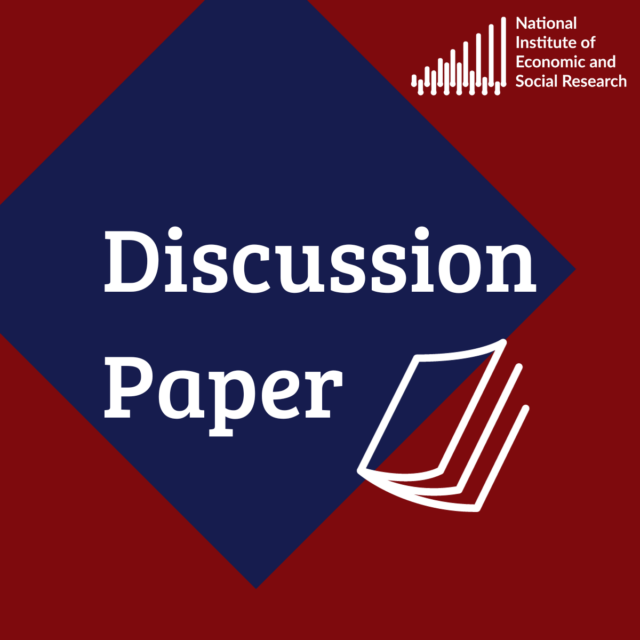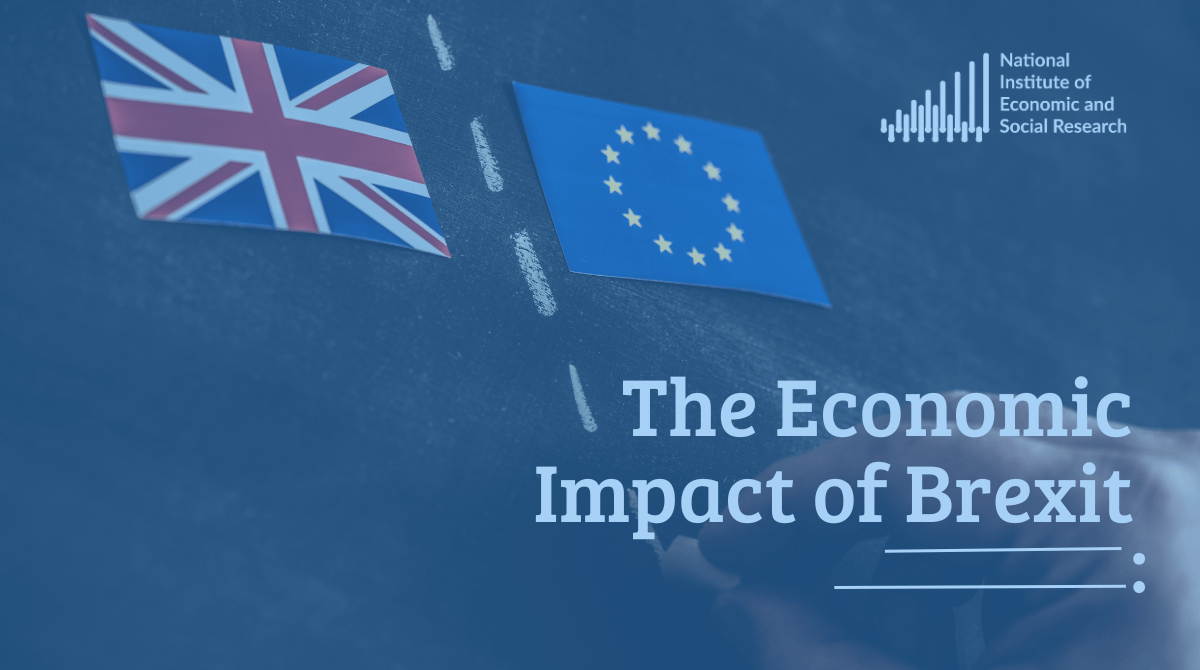Business Investment and Brexit
The purpose of this research is to develop a calibrated macroeconomic model that tries to quantify the effects of Brexit on UK productivity via the lowering of business investment.

Summary & aims
In June 2016, the United Kingdom voted to leave the European Union in what came to be known as ‘Brexit’. Although the formal separation only happened at the end of January in 2020, the uncertainty surrounding the precise form of this separation – in particular, the extent of the tariff and non-tariff trade barriers that would result – meant that firms cut back on investment immediately following the referendum. Now that the formal separation has been completed, the increased trade barriers have acted to reduce the profitability of trade, with ongoing negateive effects on investment. The lower business investment that has resulted from the Brexit referendum and Brexit itself will have reduced labour productivity and – given that most technological progress is ‘embodied’ in capital – likely reduced the growth rate of technological change. The purpose of this research is to try and quantify the effects of Brexit on UK productivity via the lowering of business investment.
This work will contribute to the literature on the effects of Brexit by bringing together the effects on trade, business investment and productivity. Although, much work has been done on the potential effects of Brexit on each of these individually, much less has been done on linking them together, particular since Brexit has actually taken place.
Methodology
The project itself will consist of three stages. First, we will use NiGEM to update our previous work on the short-run and long-run effects of Brexit on GDP and productivity carried out shortly after the referendum. This work will be written up in a ‘NiGEM Topical Feature’ to be published within our Global Economic Outlook at the beginning of November 2023. It will also be presented at our ‘Brexit’ workshop on 17 November. Then, we will review the relevant literature on the links between Brexit, business investment and productivity. We will use this literature to guide for our thinking as we develop a model based on Fattal Jaef, R and Lopez, J (2014), ‘Entry, trade costs and international business cycles’, Journal of International Economics, Vol. 94, pages 224-38, which adds capital to the model of Ghironi, F and Melitz, M (2005), ‘International trade and macroeconomic dynamics with heterogeneous firms’, Quarterly Journal of Economics, Vol. 120, pages 865-915, and which will enable us to quantitatively assess the impact of Brexit on investment and, hence, productivity.
More specifically, the model will be a calibrated three-country DSGE model of international trade, where the three countries correspond to the United Kingdom, the European Union and the Rest of the World. In essence, it will represent an extension to three countries of the two-country model that we want to develop within our TPI project on ‘Trade, investment and productivity’. The main difference – other than the addition of a third country – is that we want to calibrate the model so as to analyse the specific issue of the effects of Brexit, rather than looking at the relationship between trade, investment and productivity more generally.
Returning to the model, households in each of the three countries consume domestically produced final goods and supply labour to domestic producers of intermediate goods. Their assets consist of capital, domestic and foreign bonds, and shares in the domestic intermediate goods producers. Final goods producers combine domestic and imported intermediate goods and operate in perfectly competitive markets. Intermediate goods producers use capital and labour as inputs and operate in monopolistically competitive markets. They are assumed to have heterogeneous levels of productivity drawn each period from a Pareto distribution. They face a sunk entry cost, which means that only firms with productivity above a certain level will enter the market. Once in the market, they face a fixed cost of production. They will continue to produce as long as their productivity is high enough for them to remain profitable and this will depend upon the competition they face from foreign exports; the more open the economy, the higher will be the average level of domestic productivity. Intermediate firms also face a fixed cost of exporting, as well as standard ‘iceberg’ variable costs of exporting. The presence of the fixed cost implies that only the most productive firms will export (a feature we observe in the data). Key to this project will be the calibration of the fixed and variable costs of exporting for each of the three bilateral trading relationships. In particular, we will need to quantify the effects of Brexit on the fixed and variable costs of exporting between the United Kingdom and the European Union.
In order to assess the robustness of our results, we will also use NiGEM to both help us calibrate the trade costs and, more importantly, generate an alternative set of simulation results that we can compare with those generated by our simpler three-country model. We aim to use our simple model to help guide how we impose the Brexit shock on NiGEM and vice-versa. The result will be a paper where we can make clear the mechanisms involved in the context of a relatively simple model as well as give a view as to their quantitative importance using NIGEM.
Principal Investigator

Researchers









